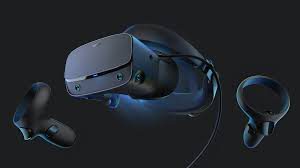From a research done at the Universty of Washington, an application on smartphones can turn the phone in to a short-range active sonar system to identify acute opioid toxicity. The application would be looking for respiratory depression, apnea, and gross motor movements.
Why this is important – Currently there is not a mobile system that can detect the symptoms of opioid overdose in real time. Currently, to identify opioid overdose, we have to rely on medical-grade equipment or trained recognition of diagnostic signs.
Why this is challenging – For this application to work, it will need access to patients and data while high-risk opiod use occurs. That can present a life threatening situation.
How to overcome it – They will test patients in two unique environments where it is heavily supervised.
The system uses a frequency-modulated continuous waveform (FMCW) and uses the smartphone’s speaker and microphone to turn it into a short-range active sonar system. The system then runs algorithms that detects frequency shifts.
In opioid-induced central apnea, the system identified 96% sensitivity and 98% specificity. In respiratory depression, the system identified 87% sensitivity and 89% specificity. These were two key events that commonly precede opioid overdose. The algorithm identified 19 of 20 simulated overdose events.
I think that this new application can be a low end market disruptive innovator. There will be no need for medical grade equipment or someone with trained recognition present. Going beyond just opioid overdoes, I think this can open doors to other health related issues. In a controlled testing environment, I think that there are endless possibilities as to what health related issues can be identified using your smartphone.
Study can be found here

:no_upscale()/cdn.vox-cdn.com/uploads/chorus_asset/file/15985633/lcimg_aed3a291_dcab_4ff5_9951_5969b9dbd89b.jpg)


 Where shopping via Instagram used to take the buyer to an external website, it’s now all done within the app, including notifications about shipment and delivery, etc. Users will need to enter their name, billing and payment information, and shipping address only the first time. After that, it’s literally shopping at the tap of a screen. For now, payment information stored with Facebook will only be used on Instagram. But it’s easy to imagine Facebook letting you use your credentials elsewhere in its family of apps. In the meantime, Facebook says it won’t share your payment information with other users or with retailers. Now is the time for Instagram users to ensure that their passwords are secure. Better yet, take advantage of the two-factor authentication that Instagram offers, especially once all of your billing information is connected to your account.
Where shopping via Instagram used to take the buyer to an external website, it’s now all done within the app, including notifications about shipment and delivery, etc. Users will need to enter their name, billing and payment information, and shipping address only the first time. After that, it’s literally shopping at the tap of a screen. For now, payment information stored with Facebook will only be used on Instagram. But it’s easy to imagine Facebook letting you use your credentials elsewhere in its family of apps. In the meantime, Facebook says it won’t share your payment information with other users or with retailers. Now is the time for Instagram users to ensure that their passwords are secure. Better yet, take advantage of the two-factor authentication that Instagram offers, especially once all of your billing information is connected to your account.


